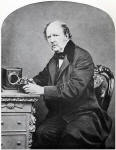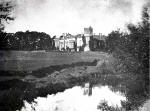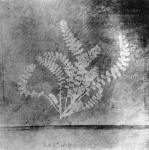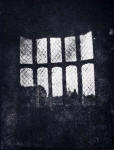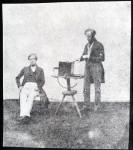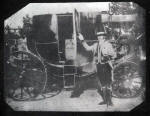|
William Henry Fox Talbot 1800 - 1877 and his life in England |
|
|
Background Talbot's connection with Lacock Abbey in Wiltshire is well known. This was originally a nunnery, founded in 1232. Talbot's family had lived there since the sixteenth century, but due to the family's financial circumstances, they were not able to afford to live there at the time of his birth. Talbot later returned to Lacock Abbey, and there he carried out many of his early photography experiments. The building now houses a museum dedicated to the work of Talbot. Talbot is best remembered for his photographic discoveries, but he also had expertise in mathematics and optics and was a keen astronomer and archaeologist, with a good knowledge of ancient Greek and Hebrew. Talbot's photographs, negatives documents and equipment were donated by his grand-daughter in 1937, some to the Science Museum , some to the Royal Photographic Society. |
|
| 1800 | Born at Millbury, Dorset. His father heavily in debt a few months later, leaving WHF Talbot as the only child from this marriage. |
| 1804 | Talbot's mother, Lady Elizabeth Fox Strangeways, married Rear Admiral Charles Fielding. Talbot had two half-sisters from this marriage. |
| 1808 - 1811 | Attended Rottingdean boarding school. |
| 1811 - 1815 | Attended Harrow school. |
| 1815 - 1817 | Given private tuition. |
| 1817--1821 | Attended Trinity College, Cambridge. |
| 1827 | Returned to the family's ancestral home, Lacock Abbey. |
| 1832 | Elected Fellow of Royal Society, having written many papers on mathematics and optics. |
| 1832 | Elected Member of Parliament for Chippenham. He chose not to seek election for the following parliament in 1835, to leave more time for his other activities. |
| 1832 | Married Constance Mundy of Markeaton |
| 1833 | Honeymooned in Italy,
where he drew Lake Como using his camera lucida.
He determined to find a way to fix these pictures on paper. |
| 1834 |
Experimented and managed to fix images on paper. |
| 1834 |
Produced his first camera image on paper the lattice window at Lacock Abbey. His surviving negative is dated August 1835. It is about one inch square. |
| 1839 | Announced his discovery of photography (photogenic drawing), displaying his work at the Royal Institution on 25 January and presenting a paper to the Royal Society on 31 January. |
| 1840 | Found a way to reduce the exposure needed for his pictures by using gallic acid to develop his images before fixing them. |
| 1841 | Patented his Calotype Process. He was to take out further patents in the 1840s and 1850s, for engraving, photography and the internal combustion engine! |
| 1841 |
Patented his Calotype Process and continued to take photographs in and around Lacock Abbey |
| 1844 |
Set up his printing works at Reading. This enabled him to produce large numbers of photos to be tipped in to his book, Pencils of Nature, the first book to be published with photographic illustrations. |
| 1851 | Turned his attention and knowledge of Hebrew and Greek to translating the Assyrian cruciform inscriptions. |
| 1851 | Scott Archer published his wet collodion process, which superseded both the Daguerreotype and calotype processes. |
| 1860 | Retired to Lacock |
| 1877 | Died, aged 77. |
|
Bibliography Many books have been written on the life of Talbot. I found the following two small illustrated publications to be particularly helpful and readable:
- Fox Talbot (John Hannavy) Shire
Publications Ltd: Lifelines 38 3rd edition 1997
- The First Negatives (D B Thomas) A
Science Museum Monograph 2nd Impression.1970 - Peter Marshall's About Photography web site gives some of the early family details listed above. However it says that Talbot's attendance at Harrow School from age 11 lasted for one year only, during which time he was elected Head Boy and expelled from chemistry lessons for causing an explosion. - However, In the timeline above, I have assumed that the dates given in Prof. Larry J Schaaf's Talbot Correspondence web site are correct and that Talbot attended Harrow for four years before being taught privately for two years then attending |
|
